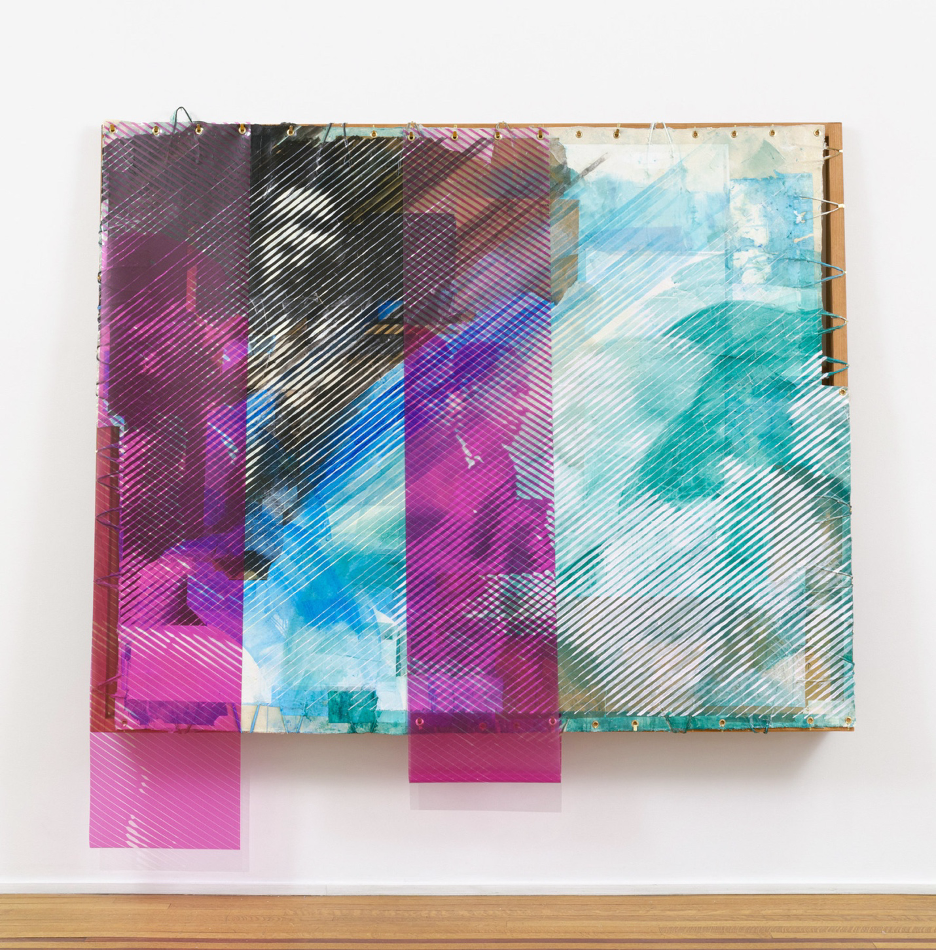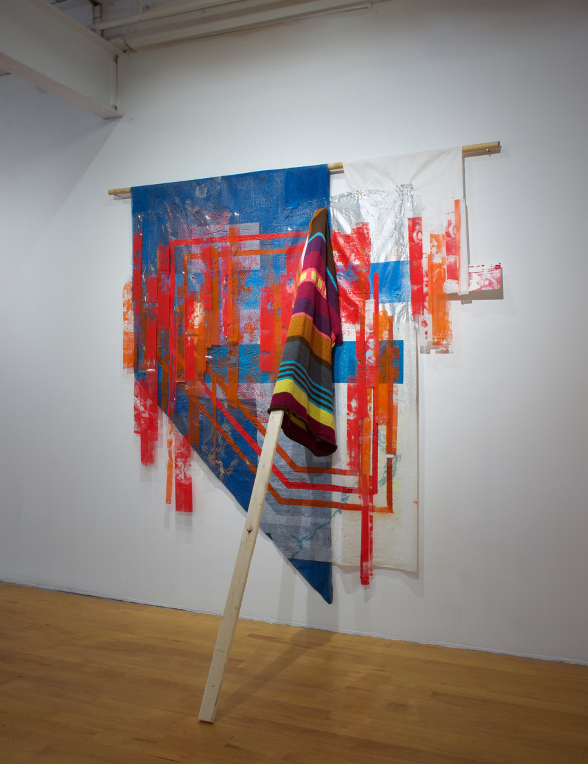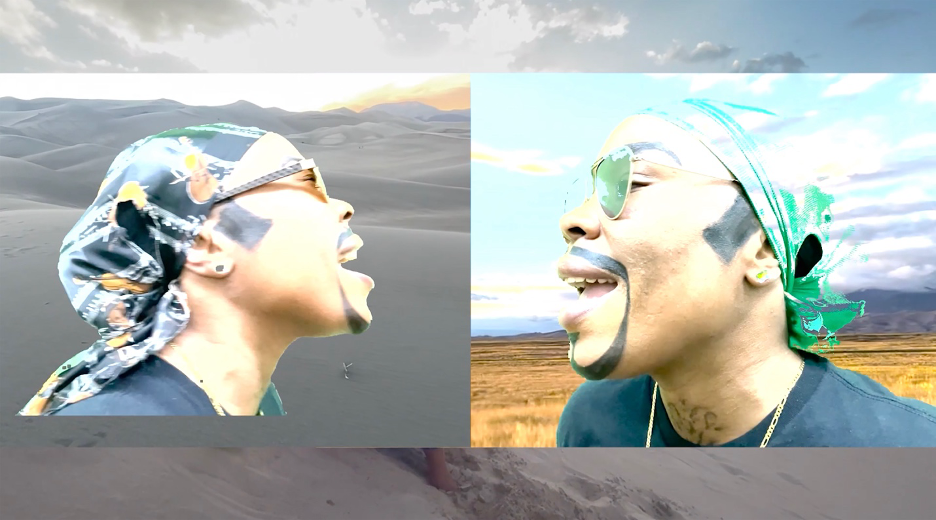To Stay and Linger, ‘Tomashi Jackson Across the Universe’


Spanning almost a decade of Tomashi Jackson’s career, Across the Universe is an inquiry into structural violence and subjection waged against black and indigenous communities—made possible America’s vision of democracy—but it is also an unrelenting insistence that the project of democracy cannot exist without us, whether deleterious for our people or not. This body of work epitomizes the importance of research-based art in a world that is becoming violently anti-intellectual; in a world increasingly invested in the disinformation and the manipulation of information. Jackson’s works help to fight the rising tide against those of us who bust our asses to survive in this world; who barely stand a chance against the logic of settler colonialism, racial capitalism, and ecocide.
There is no doubt that the histories that animate black life guide the traveling exhibition that brings together work that traverses the mediums of print, collage, painting, video, and sculpture—first on view at the Museum of Contemporary Art Denver it is now open at Institute of Contemporary Art Philadelphia through June 2nd. The works are emblematic of Jackson’s adept usage of materials, which the artist noted, at the press preview, as “a weird resistance to the canvas on its own.” Mediums are not necessarily translated together, as much as tethered by a radical rejection of what defines a particular medium. For example, works like States’ Rights (Brown et al. v. The Board of Education of Topeka, Kansas)(Limited Value Exercise), 2017 soften the line between painting and sculpture. For Jackson, “a painting is a window into a world that does not exist.”

Her profound understanding of color—and its violent instrumentalization in the Western world—lends itself to the conceptual work that animates each piece. Inspired by Josef Albers’s concept of “vibrating boundaries,” she uses abstract color schemes to hold in tension color relativity and the manufacturing of color as a scalar. The video collage Vibrating Boundaries (Law of the Land)(Self Portrait as Tatyana, Dajerria, & Sandra), 1963-2015 combines painting, textiles, performance, and archival ephemera. A study of color, the video contains a frame of a woman reading to children. Hues of blue that range from a lighter iteration of cobalt turquoise to cerulean blue, indexing the various shades of pool water, frame the woman, who sits slightly behind the frame of an entryway. Sitting upright, with her feet crossed, she gazes down at the book opened in her lap. The two children are seated slightly away from her, on the other side of the entryway. Foregrounded are sepia-esque hues that animate light. Behind one of the children, there is a knitted object that incorporates the hues of the background as it is sandwiched between dark brown and gradations of tan. The blocking of red-orange and orange, with a thin line of yellow segments carried over blues. Adjacent to the other child viewers see black-and-white photographs of Thurgood Marshall, Sandra Bland, Dejarria Becton, and Eric Casebolt; to name a few. The video also presents a series of tableaux vivants, which consist of five different poses, Jackson (with Patrick Renner and Emily Peacock) embodies the stress positions police violently imposed upon Tatyana Rhodes, Dejarria Becton, and Sandra Bland. The knitted neck gaiter that appears earlier in the work tethers together the performers. In these scenes, the viewers’ eyes are discomfited by the universalized postulate that color is absolute. The work crystallizes how racism manufactures anxieties about traversing the color line. Here, the brown hues of the black femme are rendered distorted into a type of contagion; that which needs to be violently contained, critiquing state-sanctioned violence against black women and girls.
Many of the works that comprise the exhibition lean into opaqueness. Using paper bags, Yule Quarry marble dust, and acrylic on canvas that is mounted on a wood awning, works like I see Fields of Green (Put the Ball Through the Hoop), 2022, circumvent the forms of titillation or antagonism one experiences—depending on who you are—when consuming antiblack, settler colonial violence in Western media. This opaqueness is not to be confused with obscurity, Jackson’s studied deliberateness tugs at viewers. Even when feeling the pressure to move along as patrons gather behind you, you linger and stay a while.

Throughout the exhibition there is an interplay between sound and visuality as audio from the video installations is heard throughout the space, spilling over into these mixed media works. The vibrancy of these works finds resonance with the soundscape of (black) popular music. In particular, Jackson’s performance-based work as her alter ego, Tommy Tonight, uses a painterly approach to cull her varied musical influences. Performances, like those with D’TALENTZ (Big Keto, A-Dogg, King, and Tommy Tonight), use the body as a canvas for Jackson’s painterly approach: the black masculine personae that comprise D’TALENTZ don painted goatees, mustaches, and sideburns. Comprised of Ariel René Jackson, Nikita Gale, and Ashley Teamer, D’TALENTZ is an ode to Octavia Butler’s eerily predictive science fiction novel Parable of the Talents. The group fashioned themselves after black boy bands of the ‘90s. Their tender and sentimental lip-sync of the torch song “End of the Road” by Boyz II Men in The End of the Road showcases how important music is to Jackson and her collaborators. The performance is not made with analyses of race, gender, or popular music, in mind, but because the work is so deeply embodied it mobilizes the black masculine to think about themes like love, filiation, and the ruse of being chosen by another. Across works like Vibrating Boundaries and D’TALENTZ The End of the Road, 2019, the importance of friendship and (black) sociality in these works, cannot go unremarked. To lean on and with others is to also engender these works.
Tommy Tonight reappears in Jackson’s Slow Down (Love Song for the Great Sand Dunes), 2023. The video is inspired by Bobby Valentino’s “Slow Down” from the eponymous 2005 album Bobby Valentino. Topping the R&B Charts, it is a fortuitously heartfelt R&B classic produced by Tim (Kelley) & Bob (Robinson), who produced R&B standards like Tamia’s “So Into You” and Sisqó’s “Thong Song.” Bubbling with a yearning and desire echoed through hypnotic keys that float across an emphatic bass drum its kickback mimics the nostalgia of symphonic hand clapping in the club, and it perfectly captures black millennial sociality in the 2000s. Jackson’s version, engulfed in the vastness of the Great Sand Dunes, is a stark departure from Valentino’s video which features video vixens and was shot on Melrose Avenue in Los Angeles. Maintaining the exacting tenderness of “Slow Down,” Jackson has traded the homosocial formation of the R&B band for the solitude of this interior moment.
Overall, Across the Universe offers a deep black study. Leaving the exhibition, I thought back at how I entered, through Nontsikelelo Mutiti’s, Entryways, 2024 which uses patterns from black diasporic artwork, as well as those of black diasporic braiding traditions, creating brassy hues of black and gold to capture the light that enters the façade—part of a series of commissions to activate the entrance. Its luminosity and playfulness, made apparent to me by barrette designs, summoned a memory of the click-clack of my barrettes as I played “slide” with my friends. We played with (black) popular sounds to chase the fleeting, yet deeply felt sense of being unencumbered. This point of entry, through a world of nostalgia and beauty, is a fitting prelude for Tomashi Jackson Across the Universe.
Tomashi Jackson Across the Universe is on view at the Institute of Contemporary Art, Philadelphia through June 2, 2024.
You Might Also Like
Nikita Gale Loosens Attitudes Around Sound With Her Performa 2023 Commission
Subtlety and Reconsidered Borders Reign in the Whitney Biennial 2024
What's Your Reaction?
Brittnay L. Proctor is a researcher and writer of performance, popular culture, and sound/visual culture at the nexus of blackness, gender, and sexuality. She is Assistant Professor of Race and Media in the School of Media Studies at The New School (NY, NY) and the author of Minnie Riperton’s Come to My Garden (Bloomsbury Press: 33 1/3 Series). She is currently working on two book projects; one of which soundtrack’s black Southern migration to California during the Second Great Migration and the other, which draws on LP records and Compact Disc’s (CD’s), to trace the sonic and visual discourses of gender and sexuality in funk music.

